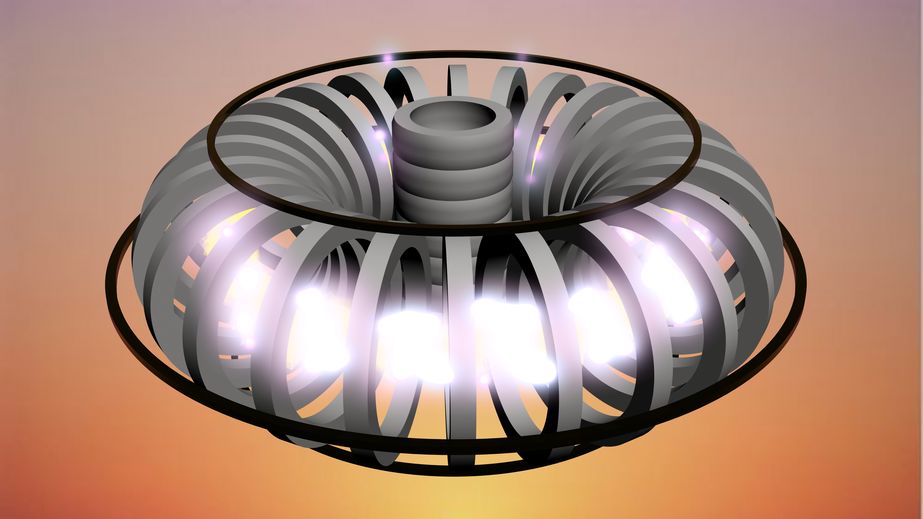Abundant, affordable energy is essential to our future. Is fusion the answer?
Does fusion work? Look up. The answer lies in the stars. Can we use it? There’s the rub. Fusion also produces zero CO2 emissions (if that’s your thing).
The nuclear fission that powers today’s reactors, despite being clean, safe and affordable and promising new technologies, is in decline.
Fission involves splitting an atom’s heavy nucleus into two lighter ones. In the process massive energy is generated along with nuclear waste.
Fusion goes the other way. It involves joining two lighter nucl ei into one heavier, again generating massive energy, but with little waste, though not zero.
ei into one heavier, again generating massive energy, but with little waste, though not zero.
The engineering required to contain and control a fission reaction, although brilliant, is simple compared to the challenges of fusion. Fusion reactions are incredibly hot and hard to contain.
For awhile attempts at “cold fusion” raised hope, but it turned out shoddy researchers so misrepresented it that it led to a horrific scientific scandal. If there’s anything to cold fusion, researchers must overcome possibly insurmountable technological obstacles and a scandalous past as well.
Promising work is being done in fusion that involves accepting the massive heat involved and dealing with it. The energy needed to sustain a fusion reaction is likewise massive, with the challenge being to create a reaction that yields more energy than it consumes. Not easy, but maybe doable. The plan is to contain the reaction inside a powerful magnetic field using superconductors. This is done inside a container called a “tokamak.” This unwieldly acronym is the one to know. It comes from Russian terms that together basically mean doughnut-shaped device that uses magnets to control hot plasma.
Today there are tokamak prototypes all over the world, though only a few are at the cutting edge.
The most well known tokamak is the “International Thermonuclear Experimental Reactor” or “ITER”  under development in the south of France. It is massive. The United States is contributing an electromagnet powerful enough to lift an aircraft carrier. The ITER is massive not only in size, but in cost. Originally estimated to cost five billion dollars, the cost may now exceed forty. This led some deficit hawks in the Senate, led by Lamar Alexander, to strip funding from ITER from the 2017 budget, though the funding was restored.
under development in the south of France. It is massive. The United States is contributing an electromagnet powerful enough to lift an aircraft carrier. The ITER is massive not only in size, but in cost. Originally estimated to cost five billion dollars, the cost may now exceed forty. This led some deficit hawks in the Senate, led by Lamar Alexander, to strip funding from ITER from the 2017 budget, though the funding was restored.
Smaller scale projects are generating great excitement at lower cost and hope to be in practical use, racing ITER to the first reaction.
On June 6th “Tokamak energy U.K.” announced that it had successfully, albeit briefly, used a round containment field to control a fusion reaction with a temperature hotter than 15 million degrees. That’s hotter than the core of the sun. 100 million degrees is the goal.
The Princeton Plasma Physics Laboratory briefly created a controlled fusion reaction in 1994 that briefly produced 10.7 million watts of controlled power, enough to power 3,000 homes.
MIT recently announced plans to create a fusion reactor that would release one fifth the energy of ITER contained by a tokamac one sixty-fifth the size.
 Lockheed Martin’s legendary “Skunkworks” is developing compact fusion reactors that would be around the size of a tractor trailer. They applied for a patent for aspects of their technology in February of this year. They hope to produce a working prototype in five years, power naval vessels in ten and produce reactors that could drop in and power up existing power plants within twenty. They foresee their reactors powering aircraft with near-unlimited flight duration and reducing the time it would take astronauts to travel to Mars from six months to one.
Lockheed Martin’s legendary “Skunkworks” is developing compact fusion reactors that would be around the size of a tractor trailer. They applied for a patent for aspects of their technology in February of this year. They hope to produce a working prototype in five years, power naval vessels in ten and produce reactors that could drop in and power up existing power plants within twenty. They foresee their reactors powering aircraft with near-unlimited flight duration and reducing the time it would take astronauts to travel to Mars from six months to one.
Is fusion our energy future?
Tritium, unlike the nuclear fuel used in fission reactors, is not mined but must be produced. Add that to the heat, energy and other problems to be solved, and the challenges of harnessing the power of the stars are revealed as truly daunting. The potential, however, couldn’t be more appealing.
